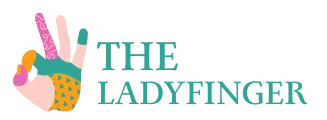In the fast-paced world of publishing, automated magazine layout is revolutionizing how content is presented. This innovative approach streamlines the design process, allowing editors and designers to focus on creativity rather than tedious formatting tasks. By harnessing advanced algorithms and artificial intelligence, automated layout tools can quickly generate visually appealing magazines that capture readers’ attention.
As the demand for high-quality content grows, so does the need for efficiency in production. Automated magazine layout not only saves time but also reduces costs, making it an attractive option for publishers of all sizes. With the ability to customize layouts based on specific themes or audience preferences, this technology is transforming the landscape of magazine publishing, ensuring that each issue is not only engaging but also tailored to meet the needs of its readers.
Table of Contents
ToggleOverview of Automated Magazine Layout
Automated magazine layout revolutionizes the publishing process by integrating advanced technology into design workflows. Automation tools utilize algorithms and artificial intelligence to generate layouts based on user inputs or predefined templates. This streamlining enables the rapid production of visually compelling content tailored to specific themes and audiences.
Automated systems support editors and designers in various ways. They reduce manual effort by automatically adjusting elements like text, images, and graphics. By aligning content to a grid, these tools ensure consistency and aesthetics, allowing creators to maintain a professional appearance across multiple pages.
Customization features add depth to automated layouts. Users can select templates that resonate with their target audience or align with branding strategies. This flexibility fosters personalization, catering to diverse market segments without compromising quality.
Speed and efficiency highlight the significant advantages of automated layout solutions. They dramatically decrease the design cycle, transforming weeks of work into hours. Publishers can respond swiftly to evolving trends and demands for timely content.
Cost-effectiveness further enhances the appeal of automated solutions. Saving on design and editing resources allows organizations to allocate budgets towards creating higher-quality content. Ultimately, automated magazine layout represents a significant advancement in the publishing landscape, promoting innovation and engagement through efficient design practices.
Benefits of Automated Magazine Layout

Automated magazine layout offers numerous advantages that enhance the overall publishing process. Key benefits include time efficiency and cost reduction.
Time Efficiency
Time efficiency represents a primary advantage of automated magazine layout. Automation tools expedite the design process by generating layouts quickly based on user inputs or predefined templates. Publishers can produce high-quality magazines in significantly shorter timeframes, allowing teams to meet tight deadlines and respond to market trends promptly. By reducing repetitive manual tasks, designers concentrate on creative aspects, resulting in more innovative content.
Cost Reduction
Cost reduction plays a crucial role in the popularity of automated magazine layout. Automation minimizes the need for extensive design teams, which directly lowers labor costs. Additionally, these tools lessen the potential for errors that could require costly revisions. With streamlined workflows and efficient allocation of resources, organizations can invest in higher-quality content creation instead of focusing solely on design expenses. Over time, the savings from utilizing automated layout solutions can significantly enhance profitability for publishing companies.
Key Features of Automated Layout Tools
Automated layout tools offer a range of features that enhance the magazine publishing process. These tools ensure efficiency, consistency, and personalization, transforming how designers and editors approach their work.
Customization Options
Customization options in automated layout tools allow users to tailor designs to specific themes and audience preferences. Users can choose from various templates, adjusting elements like colors, fonts, and images to align with brand identity. This flexibility enables publishers to create distinct looks for different issues or special editions. Additionally, many tools include design presets, enabling rapid adjustments while maintaining visual coherence across pages.
User-Friendly Interfaces
User-friendly interfaces play a crucial role in the adoption of automated layout tools. Intuitive designs enable users to navigate functionalities effortlessly, even those without extensive design experience. Drag-and-drop features simplify the placement of text and images, streamlining the creative process. Tooltips and guided tutorials further enhance usability, allowing users to maximize the software’s potential efficiently. With accessible interfaces, teams can expedite project workflows, ensuring quicker turnaround times on layouts.
Leading Automated Magazine Layout Software
Automated magazine layout software offers diverse solutions tailored to varying publishing needs. These tools enhance the design process, allowing for quicker and more efficient production of magazines.
Comparison of Popular Tools
Here’s a comparison of prominent automated magazine layout tools:
| Software | Key Features | Ideal User Base |
|---|---|---|
| Adobe InDesign | Advanced layout controls, templates, integration with Creative Cloud | Professional designers, large teams |
| Canva | User-friendly interface, extensive template library, drag-and-drop functionality | Small businesses, non-designers |
| Lucidpress | Cloud-based collaboration, customizable templates, analytics tools | Marketing teams, startups |
| QuarkXPress | Robust typography options, flexible layouts, support for multiple file formats | Experienced designers, established firms |
| MagLoft | Digital magazine focus, easy distribution, real-time analytics | Digital publishers, e-magazine creators |
These tools provide various features catering to diverse audiences, from professional designers to small businesses without design expertise.
Pricing and Licensing
Pricing for automated magazine layout software varies based on features and user requirements:
| Software | Pricing Model | Cost Range |
|---|---|---|
| Adobe InDesign | Subscription-based | $20.99/month (individual) |
| Canva | Free with premium options | $0 – $12.95/month |
| Lucidpress | Freemium model with tiered plans | $0 – $120/month |
| QuarkXPress | One-time purchase or subscription | $299 (one-time purchase) or $99/year |
| MagLoft | Subscription-based | $25/month (starting price) |
These pricing structures allow organizations to choose solutions that align with their budgets and design needs.
Challenges and Limitations
Automated magazine layout presents several challenges and limitations that publishers must consider.
- Quality Control: While automation enhances efficiency, it may compromise quality. Automated tools might not consistently produce layouts that adhere to specific design standards, leading to the need for manual revisions.
- Customization Constraints: Although templates offer customization, flexibility can be limited. Users might find that pre-set options do not fully capture their brand identity, restricting creative freedom.
- Technical Reliability: Dependence on technology introduces risks. Software glitches or incompatible file formats can disrupt the design process, resulting in delays.
- User Experience: Not all users possess extensive design skills, which can hinder the effectiveness of automated tools. Steeper learning curves for more advanced software can cause frustration among novice users.
- Cost Considerations: While automated layout tools reduce labor costs, initial investments can be high. Subscription fees and maintenance expenses may add up, particularly for smaller publishers.
- Data Security Concerns: Utilizing cloud-based tools can expose sensitive data to security risks. It’s crucial for organizations to implement strong cybersecurity measures to protect proprietary content.
- Over-Reliance on Algorithms: Automation may limit human oversight. Relying solely on algorithms might overlook nuanced design elements and context that human designers catch, affecting overall magazine quality.
- Market Adaptability: Rapid changes in audience preferences and market trends might not be addressed swiftly. Automated solutions require regular updates to templates and algorithms to stay relevant.
- Integration Challenges: Seamless integration with existing publishing workflows can pose difficulties. Publishers may encounter hurdles when coordinating automated solutions with traditional methods, leading to inefficiencies.
Understanding these challenges enables publishers to make informed decisions about incorporating automated magazine layout into their workflows, balancing efficiency with quality and creativity.
Future Trends in Automated Magazine Layout
Automated magazine layout continues to evolve, shaping the future of the publishing industry. Key trends include enhanced artificial intelligence, machine learning capabilities, and increased integration with cross-platform publishing. These advancements ensure improved customization and adaptability, allowing magazines to resonate more profoundly with diverse audiences.
- Artificial Intelligence Enhancements
AI advancements contribute to smarter layout tools, optimizing designs based on reader engagement data. These tools analyze viewer preferences and make layout adjustments accordingly, ensuring content remains relevant and engaging.
- Machine Learning Integration
Machine learning algorithms identify successful design patterns and recommend improvements. They learn from user interactions over time, continually enhancing design efficiency and aesthetics.
- Cross-Platform Integration
Integration with social media and digital platforms streamlines content distribution. Automated tools facilitate seamless sharing of magazine content, further amplifying engagement across various channels.
- Real-Time Collaboration
Future trends emphasize real-time collaboration among team members. Cloud-based solutions enable multiple users to work simultaneously on layouts, making design processes more efficient and inclusive.
- Virtual and Augmented Reality Features
Virtual and augmented reality applications introduce immersive experiences in magazine layouts. This technology engages readers through interactive content, creating a dynamic reading experience that goes beyond traditional formats.
- Sustainability Considerations
Environmental concerns drive the development of sustainable design practices within automated layout tools. Eco-friendly templates and digital-only options reduce physical waste, aligning with a growing consumer preference for sustainable content.
- Enhanced Accessibility
Ongoing improvements in accessibility aim to provide seamless experiences for all users, including those with disabilities. Automated tools will increasingly incorporate features that support users with varying needs, ensuring inclusivity.
- Data-Driven Insights
Advanced analytics provide publishers with actionable insights into reader behavior and preferences. These insights shape future content strategies, optimizing layout decisions for maximum impact.
- Personalization Options
Automation allows for extensive personalization in magazine layouts. Readers can expect tailored editions based on individual interests, enhancing user engagement and loyalty.
- Cost-Effective Solutions
Continuous innovation in automated layout technology leads to more cost-effective solutions for publishers. Subscription services and scalable tools enable organizations to find options that fit different budgets while delivering high-quality results.
Automated magazine layout is reshaping the publishing landscape by merging creativity with cutting-edge technology. As publishers embrace these tools, they can enhance efficiency while maintaining high-quality standards. The ability to customize layouts and respond to audience preferences fosters deeper reader engagement.
Despite some challenges, the benefits of automation far outweigh the drawbacks. With continuous advancements in AI and machine learning, the future of magazine design looks promising. Publishers who adapt to these changes will not only streamline their processes but also elevate their content, ensuring they remain competitive in an ever-evolving market.




